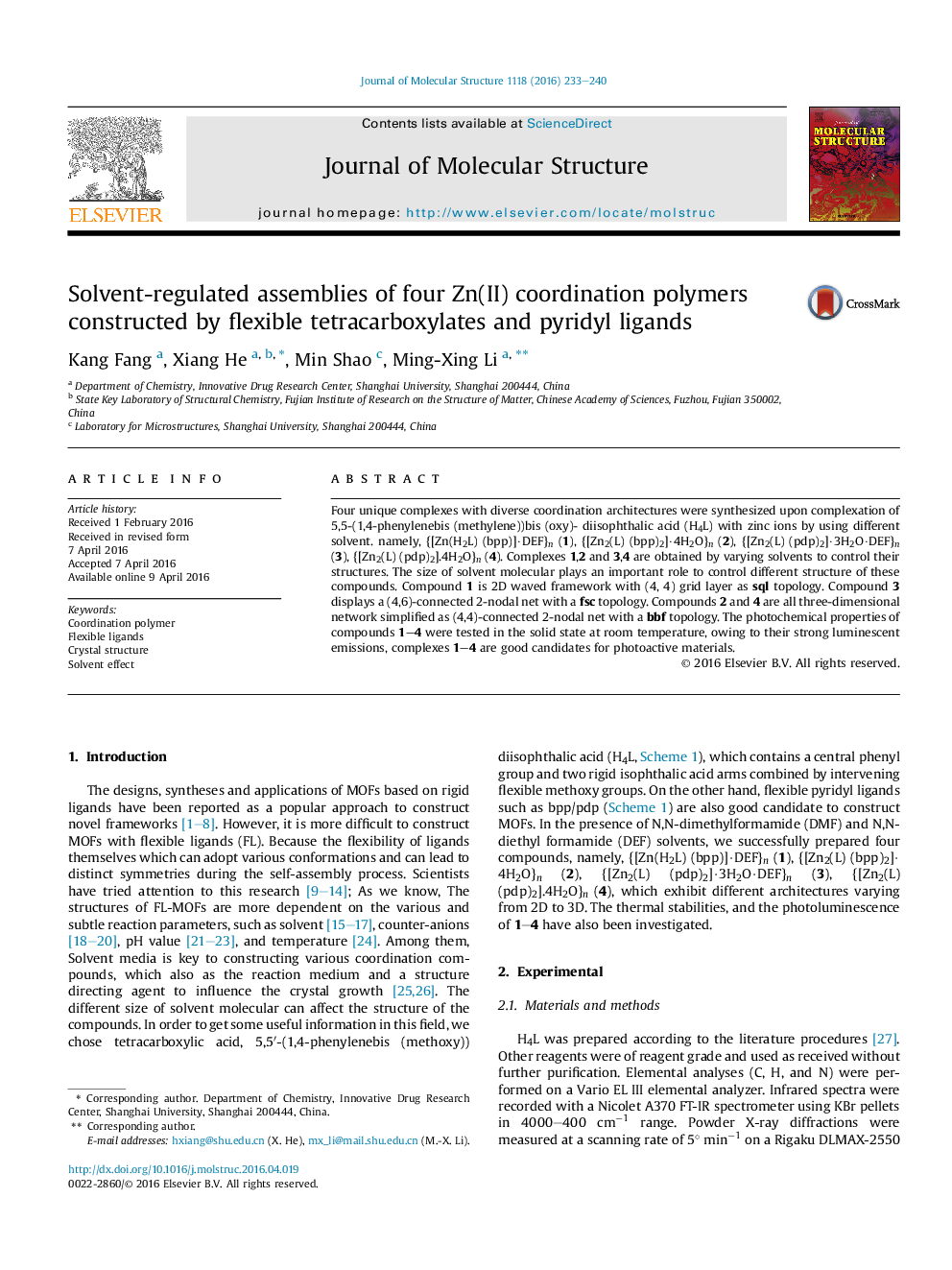| Article ID | Journal | Published Year | Pages | File Type |
|---|---|---|---|---|
| 1408813 | Journal of Molecular Structure | 2016 | 8 Pages |
•Four new Zn (II) coordination polymers have been synthesized and characterized.•The size of solvent molecular may as template to make more porosity for assembling structure.•The solvent effects play an important role for design these compounds.
Four unique complexes with diverse coordination architectures were synthesized upon complexation of 5,5-(1,4-phenylenebis (methylene))bis (oxy)- diisophthalic acid (H4L) with zinc ions by using different solvent. namely, {[Zn(H2L) (bpp)]·DEF}n (1), {[Zn2(L) (bpp)2]·4H2O}n (2), {[Zn2(L) (pdp)2]·3H2O·DEF}n (3), {[Zn2(L) (pdp)2].4H2O}n (4). Complexes 1,2 and 3,4 are obtained by varying solvents to control their structures. The size of solvent molecular plays an important role to control different structure of these compounds. Compound 1 is 2D waved framework with (4, 4) grid layer as sql topology. Compound 3 displays a (4,6)-connected 2-nodal net with a fsc topology. Compounds 2 and 4 are all three-dimensional network simplified as (4,4)-connected 2-nodal net with a bbf topology. The photochemical properties of compounds 1–4 were tested in the solid state at room temperature, owing to their strong luminescent emissions, complexes 1–4 are good candidates for photoactive materials.
Graphical abstractFigure optionsDownload full-size imageDownload as PowerPoint slide
